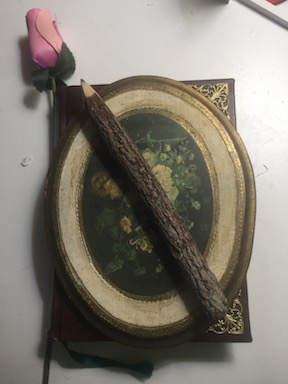


Analyzing Poetry: Lamia John Keats, Aug 20, 2017
John Keats’s Lamia puts the reader in negative capability intentionally. The reader is made to question the motives and character of all the characters in the poem. Lamia and Lycius are both ambiguous. In part two, the true intent of their actions shifts and changes. Lycius is no longer the one being seduced by Lamia, but rather the one using Lamia, “Let my foes choke, and my friends shout afar” (62). Lycius is using Lamia to show her off to his peers. Lamia knows but still decides to go along with the ceremony,
Wheels round its dazzling spokes.”—The lady’s cheek
Trembled; she nothing said, but, pale and meek,
Arose and knelt before him, wept a rain (64-66).
Rather than seducing Lycius, as she did in the beginning, Lamia is weaker. She is the one bowing to Lycius without question. Lamia is crying because she knows Lycius is using her, but she chooses not to do anything about it. This contradicts my understanding of the beginning of the poem. I had originally understood Lamia to be much more powerful than she is depicted in part two. Marks also agrees with my read of Lamia’s power, “Within part two of John Keats’ ‘Lamia’ Keats develops Lamia as a weaker character than compared to part one.” This is the main shift that causes the reader to be unable to make a definitive answer about both Lycius and Lamia's character. This is done intentionally by Keats to push his view on the dangers of reductive conclusions.
Apollonius is the only character that is not ambiguous. His intentions are clear throughout the poem. He does not want Lamia and Lycius to marry. Apollonius is an example of the dangers of being unable to remain within a paradox. He must try to make scientific sense of Lamia,
’Twas Apollonius something too he laugh’d,
As though some knotty problem, that had daft
His patient thought, had now begun to thaw,
And solve and melt:—’twas just as he foresaw. (159-162)
In part one Lamia was described as a Gordian shape. This is an allusion to the Gordian knot, which is impossible to unravel or make sense of. Apollonius cannot stand being unable to solve Lamia because he cannot stand being in a state of negative capability. He must make sense of her, which means breaking the knot. He does this in the end by exposing Lamia and causing Lycius’s death in the process. Apollonius is the true snake. He is the villain who was selfish enough to justify the death of one of his students for the satisfaction of defeating Lamia. Nathon does not share my view of Apollonius, “Apollonius indeed represents what Coleridge;s characters failed to do in ‘Christabel’ in that he saw past the guise of the creature; Christabel and Leoline grew fond of Geraldine, meaning she could never be defeated.” He argues that Apollonius is the true hero of the poem. I refute this claim. Apollonius is not the hero, but has more in common with Christabel’s Geraldine. Like Geraldine can convince Christabel and Leoline, Apollonius is able to convince the audience of what he believes. Keats is trying to show the audience that a character from the poem is manipulating them. Apollonius is able to manipulate the situation at the wedding so that Lamia is exposed, but had he not intervened nothing would have happened. Lamia knew that Lycius was moving away from her. He was under no spell of hers. Apollonius decided to jump to a conclusion rather than letting their relationship play out. He was afraid of existing within the paradox Lamia and Lycius create, and made a reductive conclusion. Apollonius is the true snake; he sneaks into the poem and does enough to not only manipulate the characters, but the reader as well.
